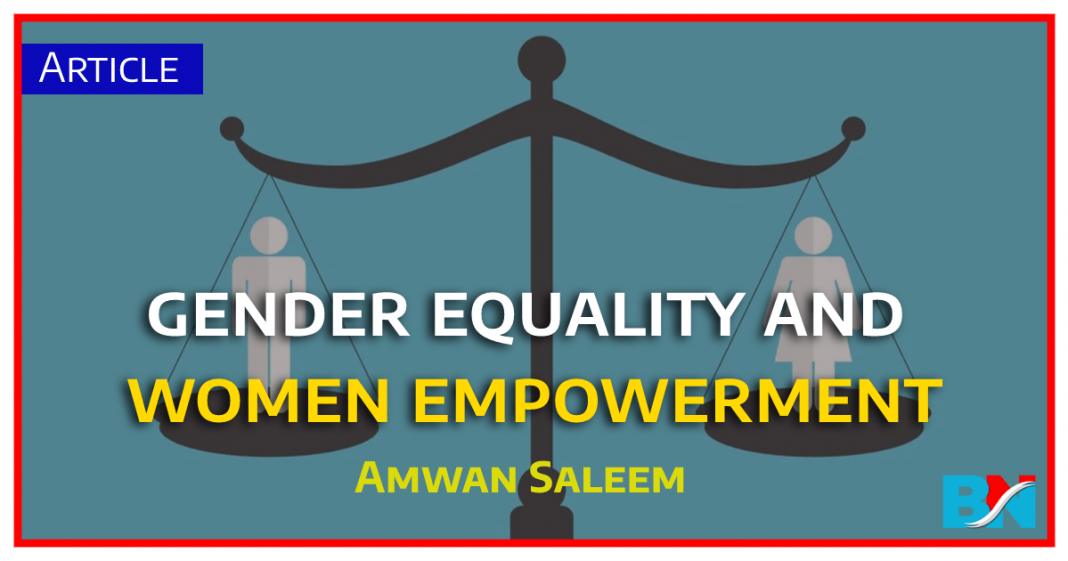Gender equality is a right of humans, but our world faces many gaps in access to opportunities and decision-making power for women and men. In every era, it remained just a slogan and nothing in practical happened to the extent that it could be function to the fullest and in actual.
Globally, women have scarcer opportunities for economic participation than men, less access to basic and higher education, greater health and safety risks, and less political representation. Women empowerment is a so-called a myth. Witnessing the rights of women and giving them chances to approach their full potential is serious not only for attaining gender equality but also for getting a greater range of international goals. If today women and girls are guaranteed their fundamental rights, it would be better for them to contribute to the health and productivity of their families, and social growth, especially for their countries in the national growth.
The word ‘gender’ refers to both men and women for equal rights in the social construction of societies. While gender equality means that men and women have equal power and equal rights for education, personal independence, and social development. A wide range of development comes by empowering women, and that only comes true when gender equality is known as an aspect of it. Women empowerment is not making a woman equal to a man rather it includes increasing a woman’s sense of self-worth, her decision-making power, her access to opportunities and resources, her power and control over her own life inside and outside the home, and most importantly, her ability to affect change.
Broadly speaking, education is a critical area to focus on and witness the injustice of gender equality. Although the world has moved in the larger interest of women in gender parity of education, girls make up a high ratio of the percentage of out-of-school children than boys. It is painful to pin down that one-quarter of girls in the developing world do not attend school. Typically, families with low income and limited resources fail to afford costs such as school fees, uniforms, and even books. Thus, families give birth to girls for household chores, carrying water, and childcare which is the constant result of gender inequality. Indeed, an educated girl is more likely to postpone marriage, raise a smaller family, have healthier children, and send her children to school.
Women’s health and safety is another important area. HIV/AIDS is becoming a progressively impactful concern for women. This can be associated with women having fewer opportunities for health education, unequal power in sexual partnership, or a result of gender-based passion. Motherly health is also an issue of definite concern. In many countries, women have limited access to prenatal and infant care and are more likely to experience worries during pregnancy and childbirth. In many countries, it remained a critical concern that girls marry and have children before they are ready or forcefully married before the puberty age of 18.
Globally, no country has fully reached the level of attaining gender equality. A true finding proves that gender equality is women’s economic and political empowerment. Though women cover more than 50% of the world’s population, unfortunately, they only own 1% of the world’s wealth. All over the world, women and girls perform their best to do all domestic works without any prior payment. Eventually, still in some places, women lack rights of property and inheritance, obtain access to credit, earn income, or move up in their workplaces. In every sphere of life, including at home and on the public ground, women are widely underestimated and underrepresented as decision-makers. Even on the political surface they are ought to be the real change in democracy but still they lack equal participation.










